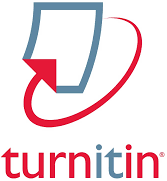Evaluation of the Ca-Mg Mineral Ratio in the Media Cultivation on the Growth Performance of Freshwater Prawns (Macrobrachium rosenbergii)
DOI:
https://doi.org/10.29303/jfh.v4i4.5959Keywords:
Ca-Mg Ratio, Growth, Macrobrachium rosenbergiiAbstract
Freshwater prawn (Macrobrachium rosenbergii) is a freshwater species which intensively cultivated. Calcium (Ca) and magnesium (Mg) are crucial factors supporting the biological and physiological activities of freshwater prawns. The presence of calcium and magnesium minerals in the environment is utilized by the prawns, especially after the molting process. Calcium and magnesium play roles in osmoregulation and the formation of the prawn's carapace. This study aims to determine the optimal ratio of calcium and magnesium minerals to support molting frequency, specific growth rate, survival rate, and feed efficiency.The experimental design used in this research is a completely randomized design (CRD) with five treatments and three replicates. The treatment given consisted of increasing Ca-Mg in the media: A: 30 mg l-1 Ca + 0 mg l-1 Mg (1:0); B: 30 mg l-1 Ca + 15 mg l-1 Mg (1:0.5); C: 30 mg l-1 Ca + 30 mg l-1 Mg (1:1); D: 30 mg l-1 Ca + 45 mg l-1 Mg (1:1.5) and E: 30 mg l-1 Ca + 60 mg l-1 Mg (1:2). Based on the result, treatment C: 30 mg l-1 Ca + 30 mg l-1 Mg (1:1) was found to improve molting frequency, growth rate, feed efficiency and survival rate.
Downloads
Published
Issue
Section
License
1. The copyright of this journal belongs to the Editorial Board, based on the author's consent, while the moral rights of the publication belong to the author(s).
2. The formal legal aspect of journal accessibility refers to the same Creative Common Attribution + Noncommercial + ShareAlike (CC BY-NC-SA), implying that publication can be used for non-commercial purposes in its original form.
3. Every publication (printed/electronic) is open access for educational, research and library purposes. In addition to the objectives stated above, the editorial board is not responsible for copyright infringement















